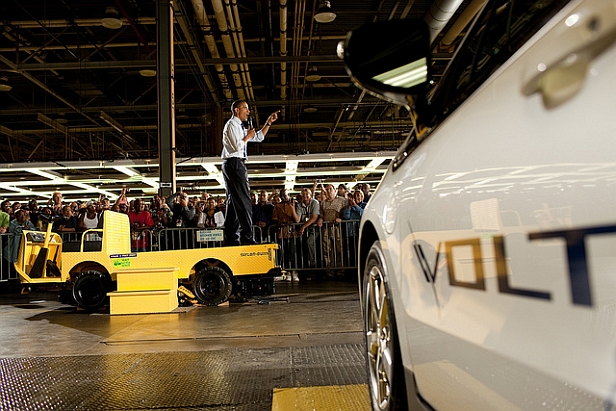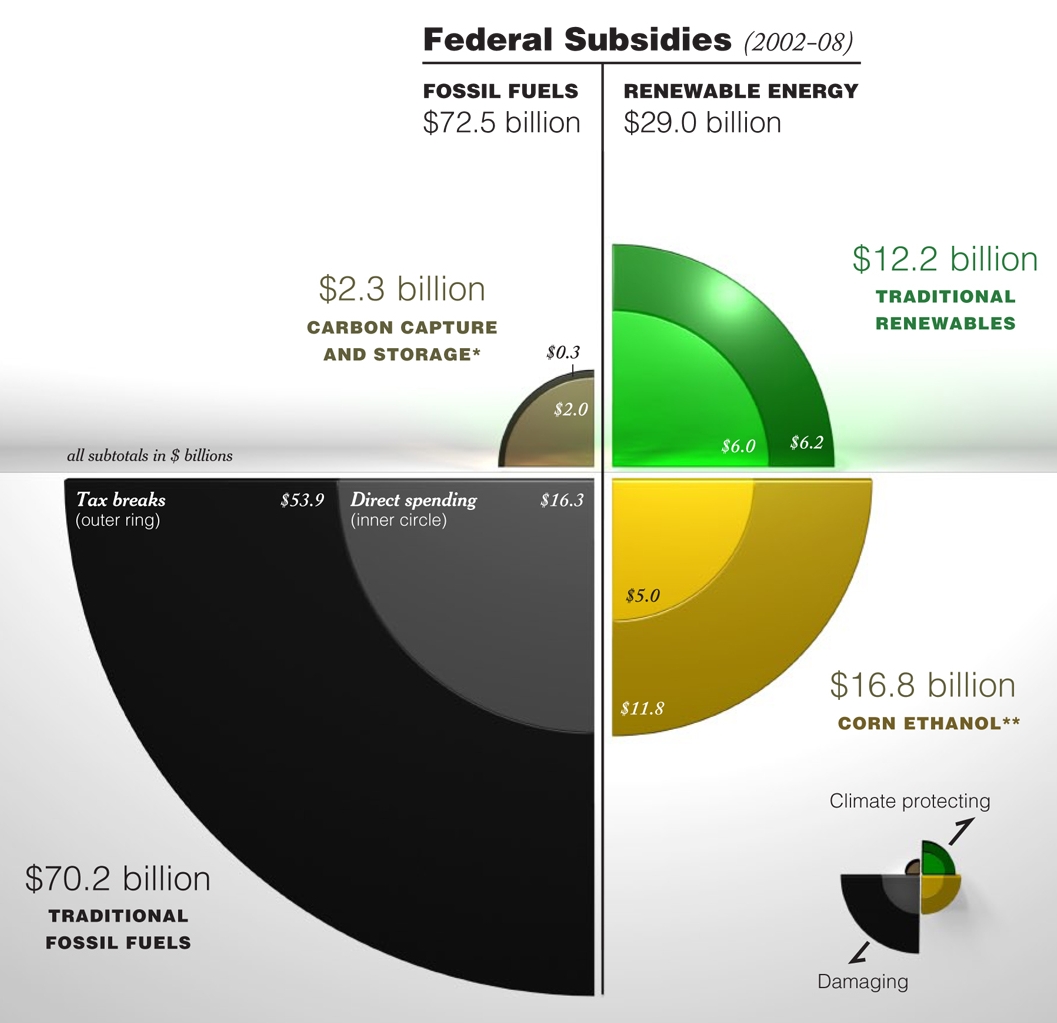 The president speaks at a General Motors electric-car plant in Hamtramck, Mich. in JulyWhitehouse.govMike Dorning of Bloomberg Businessweek has a clever way of looking at the nation’s most powerful cleantech investor:
The president speaks at a General Motors electric-car plant in Hamtramck, Mich. in JulyWhitehouse.govMike Dorning of Bloomberg Businessweek has a clever way of looking at the nation’s most powerful cleantech investor:
Racks of lime-green batteries awaited inspection on the factory floor when the well-connected investor swept through Smith Electric Vehicles in Kansas City, Mo., last month. A week later he broke ground on an advanced vehicle battery plant in Holland, Mich., the ninth battery facility his money has helped jump-start in the last year.
Meet the country’s venture capitalist-in-chief, President Obama. By the end of 2011, the White House plans to channel more than $50 billion to thousands of clean-technology companies through tax credits, low-interest guaranteed loans, and grants. Add in money for a smart grid, research and consumer tax breaks, such as the $7,500 credit for buying an electric car, and the commitment rises to $69 billion.
Obscured by the epic political battles over health care and financial regulation, Obama has turned the government into the chief financier of a manufacturing base for clean-energy technology. He envisions thriving new industries putting Americans to work churning out green products such as high-performance batteries, electric cars, low-energy lights, super-efficient air conditioners, wind turbines and solar panels.
Obama’s biggest focal points are storage — he wants to open 30 lithium-ion battery factories by 2012 — and electric cars. Still, federal government spending so far pales in comparison to China’s cleantech investment, which is nearly double total U.S. investment, according to the Pew Environment Group.
Dorning suggests that Obama’s cleantech push amounts to “a new American industrial policy,” which leads him to the tiresome trope of asking whether the government should be “picking winners and losers.”
The government already picks winners. As the graphic below shows, the federal government subsidizes fossil fuels to the tune of $70 billion (compared with $12 billion for legit renewables and $17 billion for corn ethanol boondoggles).
And that’s just energy policy. Six decades of housing and infrastructure policy have prioritized driving over other forms of mobility, as Alyssa Katz recounts. Promoting sprawl amounts to another subsidy to the oil industry.
Obama isn’t messing with “free” energy and transportation markets. Dorning’s look at new industrial policy would have more credibility if he acknowledged the subsidies we already lavish on dirty industries:




